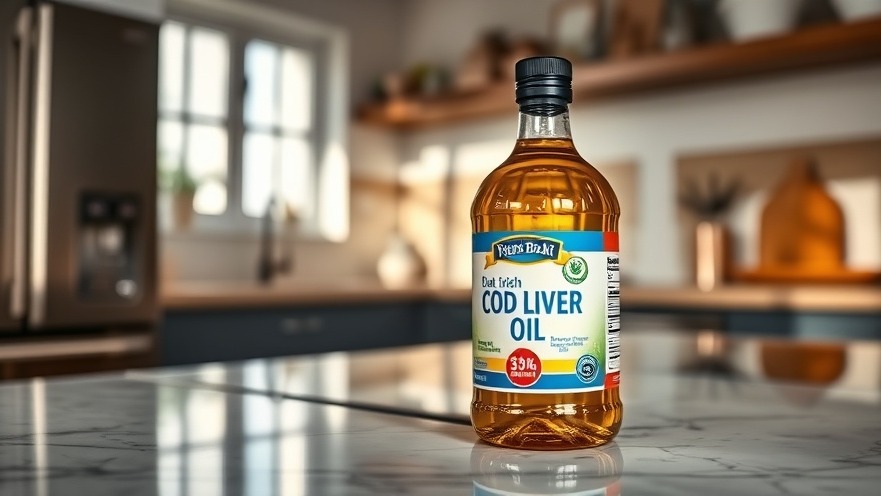
Breathing Easy: Your Complete Guide to Cleaner Indoor Air
We often worry about outdoor pollution, but here's a shocking reality: the air inside our homes can be two to five times more polluted than outside! From cooking fumes and pet dander to off-gassing furniture and conventional cleaning products, indoor air quality directly impacts our health, energy levels, and overall well-being.
The good news is that you don't need to invest thousands in high-tech solutions to make a significant difference. This comprehensive guide will walk you through evidence-based strategies to transform your home into a fresh-air sanctuary.
Understanding Indoor Air Pollution
Before diving into solutions, it's important to understand what we're dealing with:
Particulate matter (PM): Tiny particles including dust, pollen, smoke, and pet dander that can penetrate deep into lungs
Volatile organic compounds (VOCs): Gases emitted from paints, furnishings, cleaning products, and building materials
Biological pollutants: Mold, bacteria, viruses, dust mites, and pet allergens
Combustion byproducts: Carbon monoxide, nitrogen dioxide from gas appliances, fireplaces, and candles
Radon: A naturally occurring radioactive gas that can seep into homes from the ground
Secondhand smoke: Perhaps the most dangerous indoor pollutant if present
The Foundation: Source Control
The most effective and economical approach is eliminating pollution before it circulates.
Cooking and Combustion Sources
Ventilate while cooking: Always use your range hood that vents to the outside when using a gas stove
Maintain combustion appliances: Have furnaces, water heaters, and fireplaces professionally inspected annually
Install detectors: Place carbon monoxide detectors on every floor, especially near bedrooms
Consider induction: When replacing a gas stove, induction cooktops eliminate combustion pollutants entirely
Be careful with candles: Choose unscented beeswax or soy candles over paraffin, which releases benzene and toluene when burned
Household Products
Transition to safer cleaners: Look for EPA Safer Choice certification or make your own using vinegar, baking soda, and essential oils
Choose low-VOC options: When purchasing paints, finishes, furniture, and building materials, look for low-VOC or no-VOC labels
Air out new purchases: Allow new furniture, mattresses, and carpets to off-gas in a garage or well-ventilated space before bringing them into living areas
Rethink air fresheners: Most commercial air fresheners mask odors with chemicals. Try natural alternatives like essential oil diffusers or simmer pots with cinnamon and citrus peels
Moisture Management
Control humidity: Maintain indoor humidity between 30-50% using dehumidifiers in damp areas and humidifiers in overly dry spaces
Fix leaks promptly. Even small water intrusions can lead to mold growth within 24-48 hours
Ventilate wet areas: Run bathroom fans during showers and for 20 minutes afterward; ensure they vent outside, not into attics
Check for hidden moisture. Periodically inspect under sinks, around toilets, and in basements for signs of water damage
Proper drainage: Ensure your home's exterior directs water away from the foundation
The Power of Ventilation
Bringing fresh air in dilutes indoor pollutants.
Natural Ventilation Strategies
Create cross-breezes: Open windows on opposite sides of your home to maximize airflow
Time it right: Ventilate early mornings or evenings when outdoor pollution and pollen counts are typically lower
Check air quality indexes: Apps can tell you when outdoor air quality makes ventilation advisable
Use window fans strategically: Place fans facing outward in kitchens and bathrooms to expel contaminated air while placing inward-facing fans in other rooms
Mechanical Ventilation Systems
Upgrade exhaust fans: High-quality bathroom and kitchen exhaust fans make a substantial difference
-
Consider whole-house ventilation. Options include:
Exhaust-only systems: Simple but can draw in unfiltered outdoor air through leaks
Supply-only systems: Bring in filtered outdoor air but may create positive pressure
Balanced systems: Heat Recovery Ventilators (HRVs) and Energy Recovery Ventilators (ERVs) exchange indoor and outdoor air while preserving temperature and sometimes humidity
Smart ventilation: Systems that automatically adjust based on humidity, CO₂ levels, or outdoor conditions
Effective Filtration
For pollutants that remain after source control and ventilation:
HVAC System Filters
-
Know the MERV ratings:
MERV 1-4: Captures large particles (>10 microns)
MERV 5-8: Captures mid-sized particles (3-10 microns)
MERV 9-12: Captures small particles (1-3 microns)
MERV 13-16: Captures very small particles (0.3-1 microns)
Balance filtration and system performance: Higher MERV filters can restrict airflow; consult your HVAC professional about the highest rating your system can handle
Create a replacement schedule. Set calendar reminders to change filters every 60-90 days, more frequently with pets or allergies
Consider professional duct cleaning: If your ducts haven't been cleaned in years or show visible mold growth
Portable Air Purifiers
Understand HEPA filtration: True HEPA filters remove 99.97% of particles as small as 0.3 microns
Size correctly: Choose purifiers rated for your room size; undersized units won't be effective
Look for CADR ratings. The Clean Air Delivery Rate indicates how quickly a unit filters air; higher is better
-
Multiple technologies: Consider units that combine
HEPA filtration for particles
Activated carbon for gases and odors
UV-C light to deactivate biological contaminants
Placement matters: Position purifiers where you spend the most time, especially bedrooms
Run continuously: Air purifiers work best when operating 24/7 at lower speeds rather than occasionally at high speeds
DIY Air Filtration
Box fan filters: Attach a 20x20 MERV 13 filter to the intake side of a box fan for an economical air cleaner
Replace filters regularly. As with any filtration system, replace DIY filters when visibly dirty
Additional Strategies for Cleaner Air
These complementary approaches can enhance your air quality further:
Houseplants as Air Purifiers
Best air-cleaning varieties: Spider plants, snake plants, peace lilies, Boston ferns, and rubber plants can help absorb some pollutants
The right ratio: You'll need approximately one medium-to-large plant per 100 square feet for noticeable impact
Avoid overwatering: Too much moisture can lead to mold growth in soil
Smart Cleaning Routines
Vacuum effectively: Use a vacuum with HEPA filtration and clean high-traffic areas twice weekly
Dust properly: Use microfiber cloths that trap dust rather than redistribute it
Wash bedding weekly. Hot water (130°F minimum) kills dust mites
Clean soft surfaces: Periodically steam clean upholstery, curtains, and carpets
Declutter: Fewer surfaces mean fewer places for dust to accumulate
Leave shoes at the door: This simple habit reduces tracking in outdoor pollutants
Groom pets outdoors: Regular brushing reduces pet dander indoors
Air Quality Monitoring
Continuous monitors: Smart monitors can track particulate matter, VOCs, CO2, temperature, and humidity in real-time
Specialized testing: Consider professional testing for radon, lead, asbestos in older homes, or mold if you suspect issues
DIY test kits: Home test kits are available for radon, mold, lead, and formaldehyde
Special Considerations
Seasonal Challenges
Pollen seasons: Keep windows closed during high pollen times; change clothes after outdoor activities
Wildfire smoke: Create a clean room with portable air purifiers if wildfire smoke affects your area
Winter heating season: Ensure proper ventilation when using space heaters; maintain humidity during dry winter months
Renovation Projects
Contain the work area. Use plastic sheeting and tape to isolate renovation zones
Increase ventilation: Use window fans to exhaust dust-laden air
Time it right: Plan major renovations during mild weather when windows can stay open
Post-renovation cleaning: Deep clean all surfaces after project completion
Putting It All Together: A Layered Approach
The most effective indoor air quality strategy combines multiple approaches:
Eliminate sources of pollution wherever possible
Ventilate regularly to bring in fresh air
Filter remaining pollutants with HVAC and portable systems
Monitor results and adjust your approach based on measurements
Clean regularly to reduce accumulated particulates
The Bottom Line
Clean air at home isn't just about comfort—it's fundamentally about health. Poor indoor air quality has been linked to everything from asthma and allergies to fatigue, cognitive impairment, and long-term respiratory issues. By implementing these strategies, you're making an investment in your family's immediate comfort and long-term health.
Remember that creating healthier indoor air is a journey, not a one-time project. Start with the highest-impact changes that fit your budget and lifestyle, then build your clean air strategy over time. Your lungs—and your whole body—will thank you for it.
What indoor air quality challenges are you facing in your home? Whether it's lingering cooking odors, seasonal allergies, or concerns about chemical sensitivities, these approaches can be tailored to address your specific situation.
 Add Row
Add Row  Add
Add 




Write A Comment